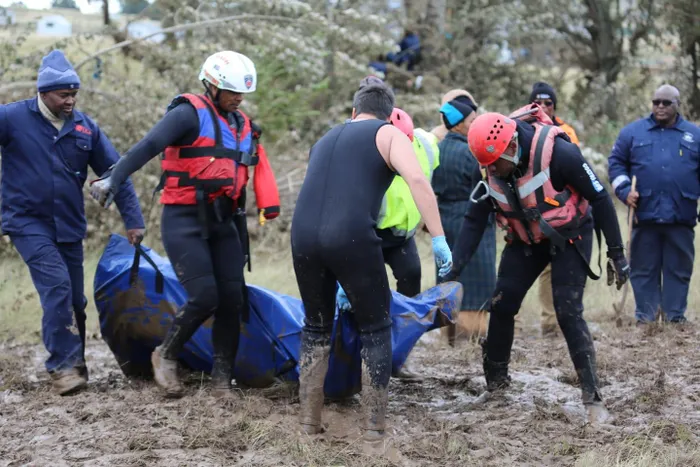SANDF HAD NO RESOURCES FOR EC FLOODS

The number of people who have died due to flooding in the Eastern Cape has risen to over a hundred.
Image: Supplied
NO SOUTH African Air Force helicopters were available to assist with emergency operations in the Eastern Cape when the flooding occurred on June 10. It only became available seven days after tragedy struck as the death toll continued to climb, and this week surpassed 100, with a 5-year-old child being among the latest to be retrieved.
Until Wednesday, the SANDF had remained tight-lipped about failure to deploy resources to affected regions in need of support.
In response to the Cape Times’ question, the SANDF said they were only alerted by the provincial authorities on the day of the incident on June 10.
“The South African Air Force Command Post (AFCP) received the first request for assistance with helicopter capabilities in the Eastern Cape (due to flooding) on 10 June 2025. At the time, there were no SAAF helicopter capabilities available. Upon receiving the second request for assistance on 16 June 2025, one (1) Oryx helicopter capability became available and was tasked to deploy on 17 June 2025,” the SANDF said.
It remains unclear why the Oryx was only available seven days after the tragedy struck. IOL previously reported that the medium utility aircraft essential for rescue missions - was not deployed during the flooding, primarily due to a shortage of Flight Engineers.
The flooding in the Amathole and OR Tambo districts between June 9 and 10 affected over 6 800 households, with more than 4 700 of them now homeless.
There was also significant damage to road infrastructure, leaving 51 roads impassable. The Eastern Cape government says completed infrastructure damage assessments peg the costs for repairing damaged infrastructure at an estimated R5.1 billion.
“Efforts by search and recovery teams are ongoing as the province continues to respond to the disaster and assist affected communities. The confirmed recoveries have been recorded across several districts, with OR Tambo reporting the highest number at 77, followed by Amathole with 10 recoveries, Alfred Nzo and Chris Hani each with 5, while Joe Gqabi and Sarah Baartman districts reported 2 recoveries each. The gender breakdown shows that 49 are men and 52 are women. In terms of age, 63 of the recovered individuals are adults, while 38 children.
“The process of identification is now complex, with some bodies in a state of decomposition and as such DNA testing may be required in certain cases, which could lengthen the identification process,” said the Eastern Cape government.
The Eastern Cape government and its national counterpart have come under sharp criticism for how they responded to the disaster, in particular for failure to prepare despite early warning.
Western Cape Local Government, Environmental Affairs and Development Planning spokesperson, Wouter Kriel said the province offered support through the intergovernmental disaster coordination mechanisms facilitated by the National Disaster Management Centre (NDMC).
“We offered the deployment of a specialist rescue team from the Western Cape’s emergency services and partners. This team is highly trained in swift water rescue and has experience in operating in complex disaster environments. While the Eastern Cape appreciated the offer of assistance, they did not request the physical deployment of Western Cape resources. As such, no teams or equipment were mobilised, although we remained on standby should the situation escalate or their needs change,” Kriel said
There are currently four teams on the ground mainly from humanitarian aid organisation Gift of the Givers, as search and recovery operations continue.
Speaking during the Portfolio Committee on Cooperative Governance and Traditional Affairs (COGTA) this week, Finance minister, Enoch Godongwana said emergency relief was currently being handled through existing departmental budgets. He said the departments of Human Settlements, Social Development and Cooperative Governance all have internal disaster allocations.
Cape Times